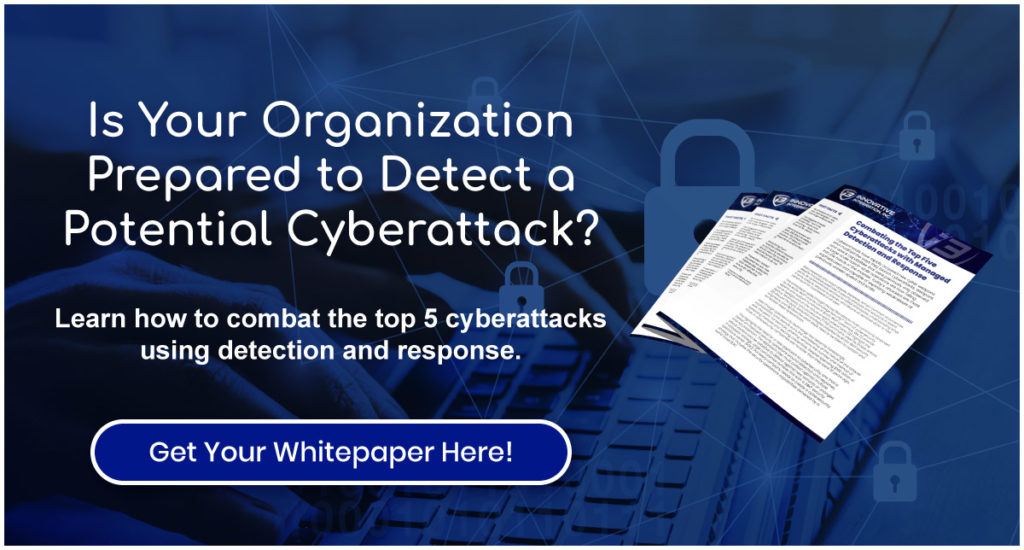As digital landscapes continue to evolve, cyber threats evolve with them. Therefore, building a cybersecurity culture becomes more important every passing day. Especially at small and medium-sized businesses (SMBs) where resources are at a premium, but the risk is substantial.
Between 2020 and 2022, there were over 31,000 cyberattacks targeting SMBs every day.
So, establishing your organization’s cybersecurity culture and ensuring you have invested in the appropriate security tool sets is not a luxury you can afford to overlook. It is a necessity that is only becoming more important.
Cybercrime is on the Rise! Click Here to See Cybersecurity Stats.
How can you build and maintain the cybersecurity culture your organization needs to fight off the expanding threat? Read on to find out.
What is a Cybersecurity Culture?
Before we talk about how to establish your cybersecurity culture, it’s important to define what a cybersecurity culture is.
A cybersecurity culture defines your organization’s behaviors, beliefs, and attitudes towards cybersecurity. It takes all these aspects and puts them into writing. In essence, cybersecurity becomes one of your core values, and its presence is felt in everything your organization does. Your culture should make clear statements about your understanding of the threat landscape and your teams’ involvement in reducing threats to your organization.

When your cybersecurity culture is strong, it will be felt in every aspect of what your business does.
Examples of positive cybersecurity behavior include not sharing sensitive information, using email phishing protection, using multifactor authentication (MFA), and employees actively recognizing and reporting suspicious activities.
Why Cybersecurity Culture is Critical
A strong cybersecurity culture directly influences the effectiveness of security measures. It’s not enough to document your cybersecurity standards—employees must adhere to them.
Negligence or ignorance towards cybersecurity can lead to devastating consequences, from data breaches to financial losses.
For instance, the 2021 Colonial Pipeline ransomware attack, which resulted in a complete shutdown and cost over $4 million in ransom. The irony is that a simple MFA check would have been enough to prevent the incident in the first place.
MFA checks can be annoying, but they go a long way in preventing unauthorized access.
If the Colonial Pipeline attack doesn’t convince you, consider the 2024 finding that the average cyberattack costs over $3 million (for companies with fewer than 500 employees).
Steps to Creating a Strong Cybersecurity Culture
Leadership and Commitment
Set the Tone at the Top: Leadership must not only endorse but actively participate in cybersecurity initiatives. Security must be a priority for everyone within the organization, so demonstrating this will help employees buy into this importance.
Allocate Resources: Don’t just include cybersecurity as a line item in your books. Cybersecurity is critical, so it must be allocated to your budget, regardless of how tight your budget is. Think of it this way: hackers won’t have mercy for your organization—they will prioritize you as a target if your cybersecurity stance is weak—so, you must prioritize your cybersecurity to deter bad actors.

Your team is looking to you for your leadership and commitment to cybersecurity!
This includes budget allocation for advanced security tools and skilled personnel dedicated to cybersecurity management.
Develop a Cybersecurity Policy: A strong cybersecurity culture will be built upon a policy which outlines security protocols, acceptable usage policies, and consequences of non-compliance. Communicate this policy to all employees across all departments so everyone understands their role in maintaining security.
Regular Training and Awareness Programs
Initial Training Sessions: When new employees join your team, you don’t skimp out on introducing them to your organization and your culture. Now that you’ve built your organization’s cybersecurity culture, make sure you introduce new employees to the culture as part of their onboarding. This helps nurture a security-first mindset right from the start.
Ongoing Education: As cyber threats evolve, your team’s knowledge must evolve with it. Hold regular training sessions to keep everyone updated on the latest threats and the measures your cybersecurity culture will take to counter them.
Engagement Activities: Conduct interactive seminars, workshops, or breach simulations to engage employees in understanding cybersecurity practically and vividly.
Feedback Mechanisms: Establish a system where employees can anonymously report suspicious activities or suggest improvements to the cybersecurity framework.
Implementation of Robust Security Policies and Procedures
Personal Device Management: Especially in bring your own device (BYOD) environments, clear policies must be set regarding security protocols for personal devices used in the workplace.
Access Controls: Implement strict measures so employees can access only the information necessary for their roles.

Device management is a central component of a strong cybersecurity culture.
Incident Response Plan: A clearly defined incident response plan helps contain and mitigate damage promptly in the event of a security breach.
Regular Audits: Periodic security reviews are crucial to identify and rectify any vulnerabilities in the system before they can be exploited.
Continuous Monitoring and Improvement
Monitor Security Systems: Utilize advanced monitoring tools to detect and respond to threats promptly.
Stay Informed About Latest Threats: Keeping abreast of new vulnerabilities and threats allows the business to adapt its defenses proactively.
Review and Improve: An ongoing evaluation of the security framework ensures it adapts to new challenges and remains robust as the organization grows.
Employee Feedback and Involvement: Encourage regular input from employees on the cybersecurity culture. Their involvement can lead to valuable insights into potential security lapses and improvements.
Turn to Innovative Integration to Support Your Cybersecurity Culture
Innovative Integration specializes in tailoring technology solutions for SMBs, focusing on essential aspects such as advanced networking, data protection, and optimized managed services.
For further guidance and a tailored cybersecurity approach for your business, contact Innovative Integration today. Let us help you ensure that security is not just a part of your business—it’s a part of your culture.



